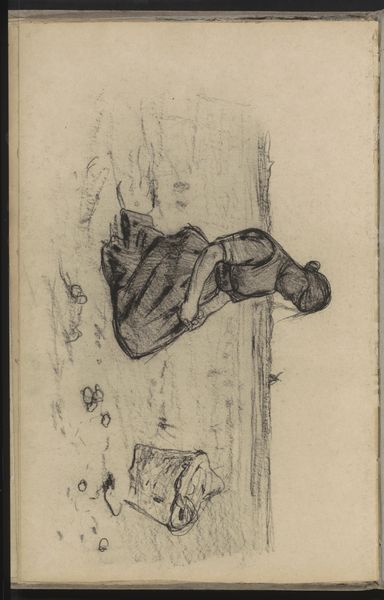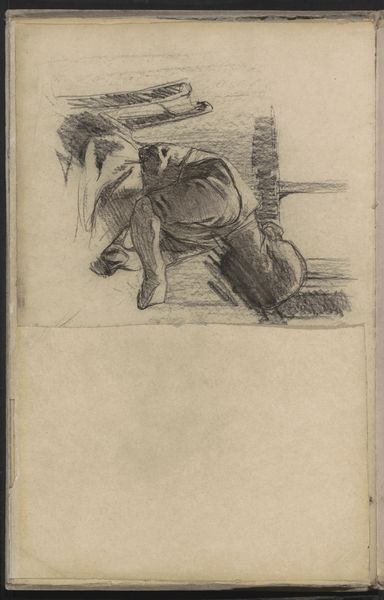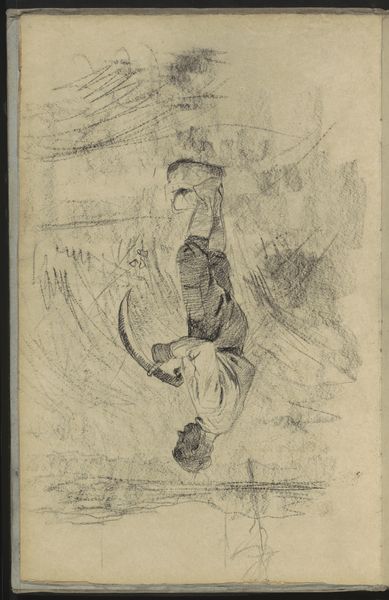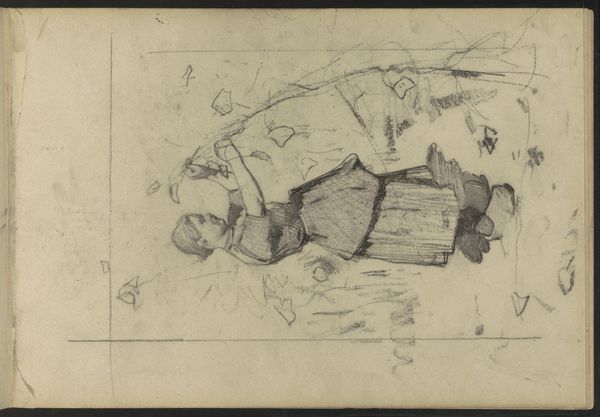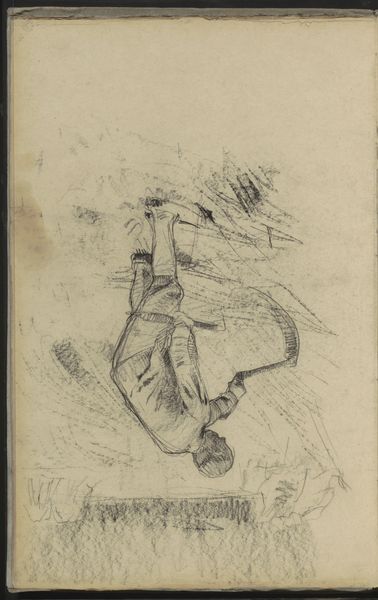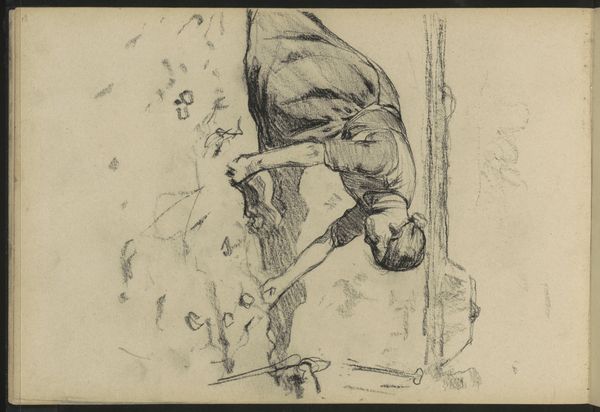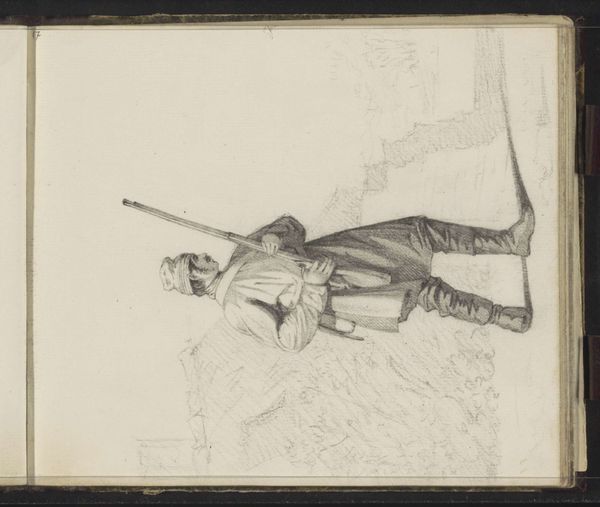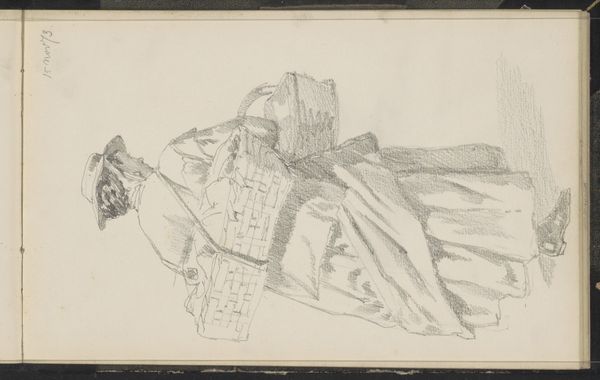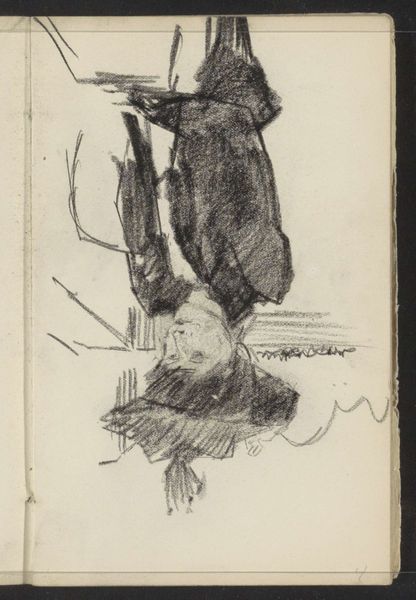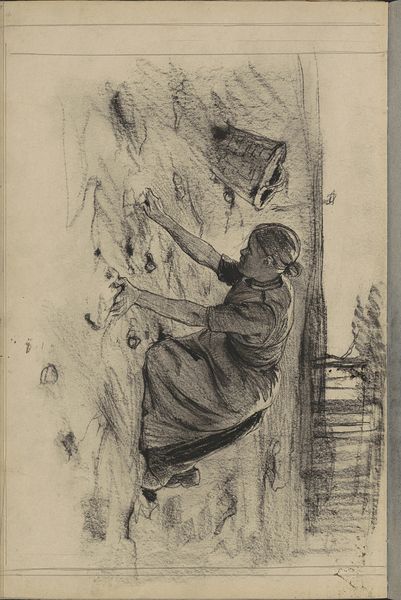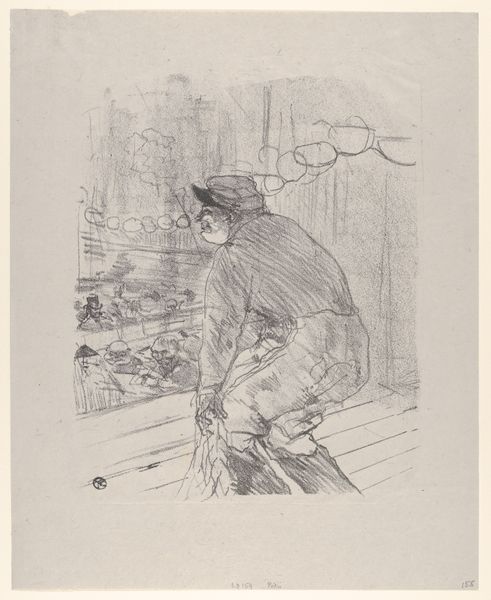
drawing, pencil
#
drawing
#
impressionism
#
pencil sketch
#
figuration
#
pencil
#
genre-painting
#
realism
Copyright: Rijks Museum: Open Domain
Curator: Immediately, I see backache! This isn’t romantic at all, is it? A woman bent double in what looks like pure, unglamorous labour. Editor: We’re looking at “Potato-Digging Woman”, a pencil drawing by Willem Witsen, from around 1886, currently held in the Rijksmuseum. It offers us a window into the daily lives of working-class women in the Netherlands during that time. Curator: A window, yes, but a smudged one. It’s all quick lines and rough shading – almost like a fleeting memory. The details aren't precise. You get the impression of heavy clothing, of a figure rooted in the soil, but there’s also something surprisingly elegant in the pose. A quiet dignity. Editor: The “quick lines,” as you call them, evoke a sense of movement and energy, really highlighting the strenuous nature of the labor depicted. Remember that Witsen was part of a generation of artists drawn to Realism, and later to Impressionism. They focused on capturing scenes of everyday life and sought to portray the lives of ordinary people. Curator: Right, less powdered wigs and more…muddy potatoes. But it feels deeply personal, doesn't it? He’s not just documenting; he’s trying to understand something about that woman’s world. There’s something in the stark simplicity, in the almost brutal honesty, that connects to something essential in the human experience. Editor: Exactly. And the “unfinished” quality invites us to consider the gaps, the silences, what is not represented in traditional depictions of labor, especially female labor. It allows us to consider class, gender, and the politics of representation in the late 19th century. How might she have felt? What were her aspirations, struggles? What agency does she hold here, and is that undermined by how she is viewed? Curator: Gaps, silences... I like that. It feels right for such a transient moment. So ephemeral! The artwork captures a fleeting moment, which only leaves us with questions... Perhaps we will never know what the subject truly felt in this work. But we were at least left to consider all aspects about them, and how they impact our life! Editor: Ultimately, art like this reminds us to look beyond the picturesque and to confront the complexities of labor, identity, and representation – elements which very much affect our society, even to this day.
Comments
No comments
Be the first to comment and join the conversation on the ultimate creative platform.
